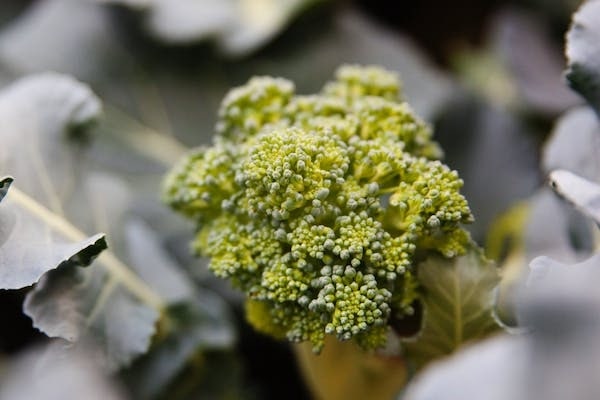
When your broccoli plant begins to flower out of nowhere, it can be quite concerning, especially when you’re not expecting it to bloom just yet.
There are several causes to why your broccoli is flowering early, which we’ve comprehensively listed for you. So without further ado, here’s everything you need to know about your broccoli flowering.
Reasons why your broccoli is flowering
A broccoli plant begins to flower or “bolt” when it’s going to seed. This means it’s going to stop growing and focus its attention on producing fruit or vegetables.
However, your broccoli plant could be bolting prematurely because of any of the following reasons:
- Overly-mature seeds
- Excessive cold temperatures
- Excessive hot temperatures
- Day length increases
- Transplant shock
- Lack of fertilizer
- Damage from pests
- Competition with weeds
- Insufficient watering
- Overcrowding
- Poor soil
For a more detailed explanation of these causes, keep reading!
What is a broccoli flower?
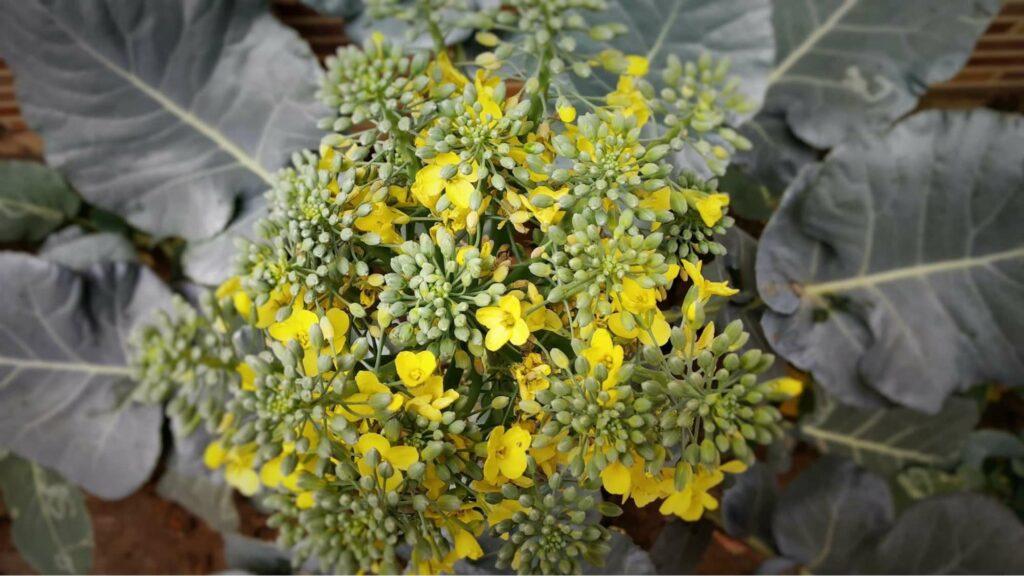
A broccoli plant can be considered a flower since the head itself can be actively pollinated. Hence, when your plant is bolting, you’ll notice small yellow flowers on the florets, turning the entire head from green to yellow..
When unopened, these flowers will become your broccoli plant seeds. You can use these the following season to plant more broccoli plants.
What does it mean when a broccoli “bolts”?
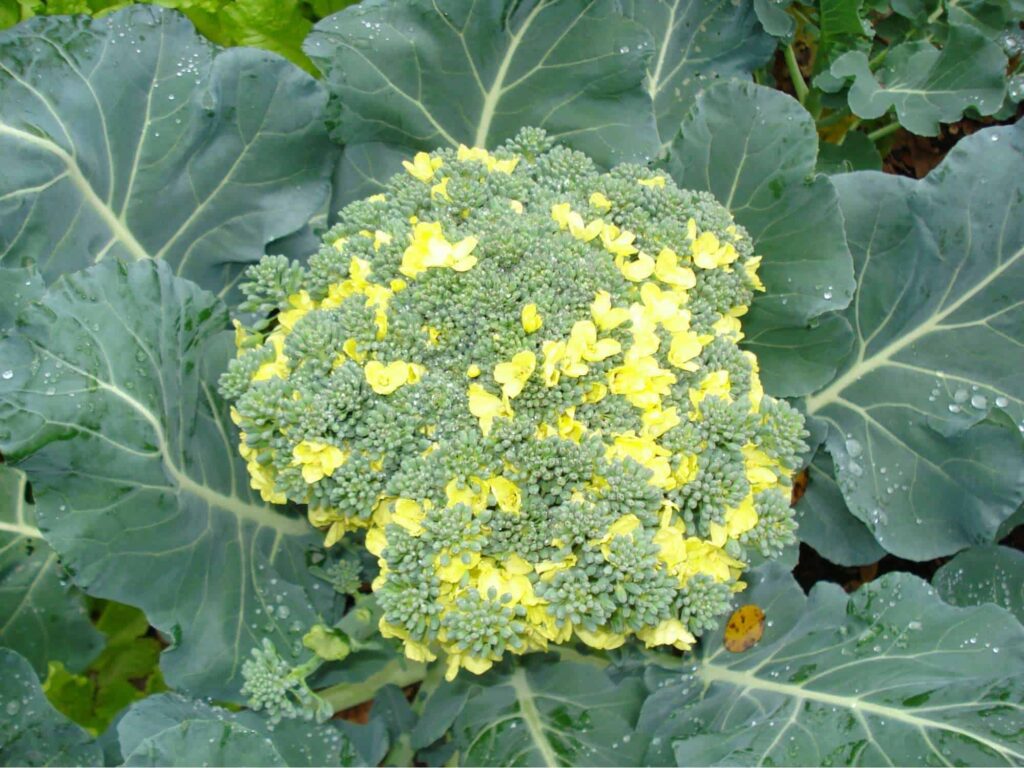
In the gardening world, “bolting” means that your plant is “going to seed” or, in other words, it’s about to flower. Flowering is a tell-tale sign that they’re about to produce their fruits or vegetables, which will stop their growth.
However, bolting could also symbolize your broccoli plant’s response to poor growing conditions or stress. In a way, it’s a survival mechanism that ensures they create seeds before they die.
Nevertheless, it’s important to note that bolting isn’t an inherently bad thing. For the plant, bolting is a natural activity that signals the start of their reproductive process.
For gardeners, though, it’s another story. Bolting isn’t an issue if you’re looking to attract beneficial pollinators such as bees or if you want to harvest seeds for the following seasons.
Otherwise, premature bolting is a concern, especially when growing leafy greens such as broccolis. This is because flowering means that your plant will focus all its energy on developing its flowers and then die shortly afterwards.
In a way, it’s wasting resources that could be used as nourishment to growing tasty leaves. Unfortunately, any leaves that grow after bolting are usually small, tough, and bitter, which some people don’t particularly like.
Though, it’s worth noting that when cooked they’ll soften up quite a bit.
No matter the case, bolting is a perfectly normal thing. Apart from broccoli plants, flowering also happens to a bunch of others such as tomatoes, peppers, and chillies, to name a few.
Signs to watch for that your broccoli is starting to bolt
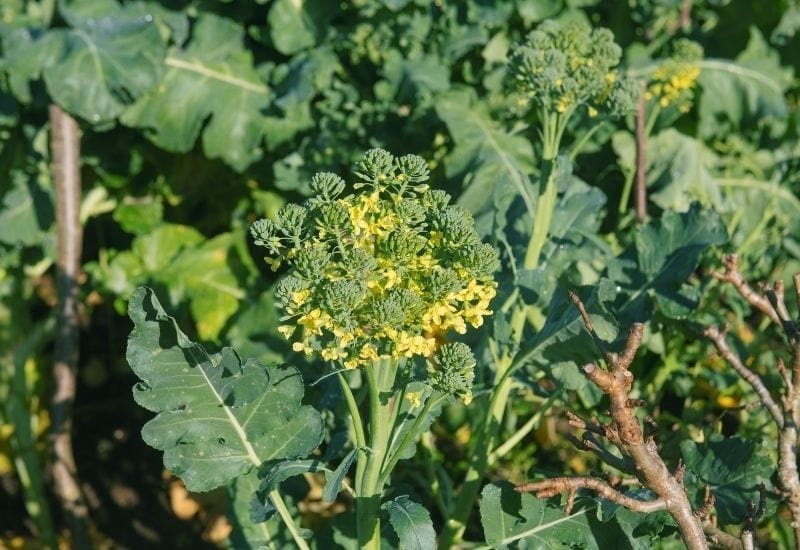
Whether you like it or not, when your broccoli plant starts bolting it’s highly unlikely that you can stop it.
Nevertheless, here are a couple of signs to watch out for that could signify that your broccoli plant is about to bolt.
- The head of your broccoli plant becomes loose and stops growing
- The green buds at the florets begin to swell
- In comparison to its neighbors, it appears to have stunted growth
- The remaining leaves have become bitter
- A long stem has grown from the middle of the head and will flower
If there are already an abundance of little yellow flowers, well, that means your broccoli plant is already in the process of bolting.
Why is my broccoli flowering?
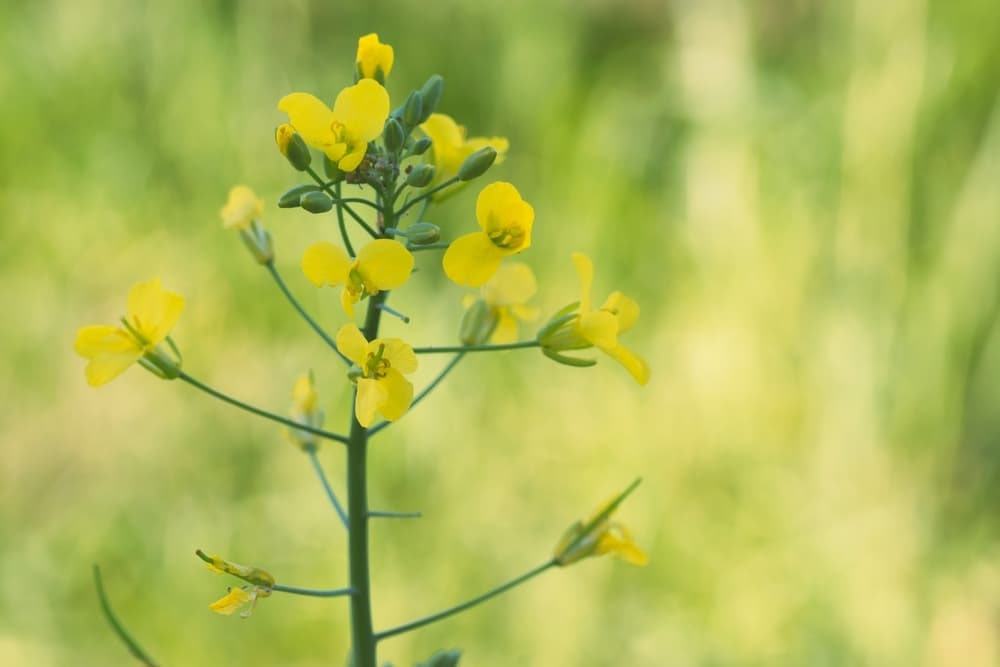
Broccoli plants bolt for several reasons. Aside from being nature’s course, your plant could be experiencing stress from changing weather conditions, insufficient water, or damage from pests, among others.
Having said that, differing circumstances bring about specific explanations for your broccoli plant to be flowering.
Read on to see which reasons are most applicable to what you’ve been experiencing at your garden.
1. Overly-mature seeds
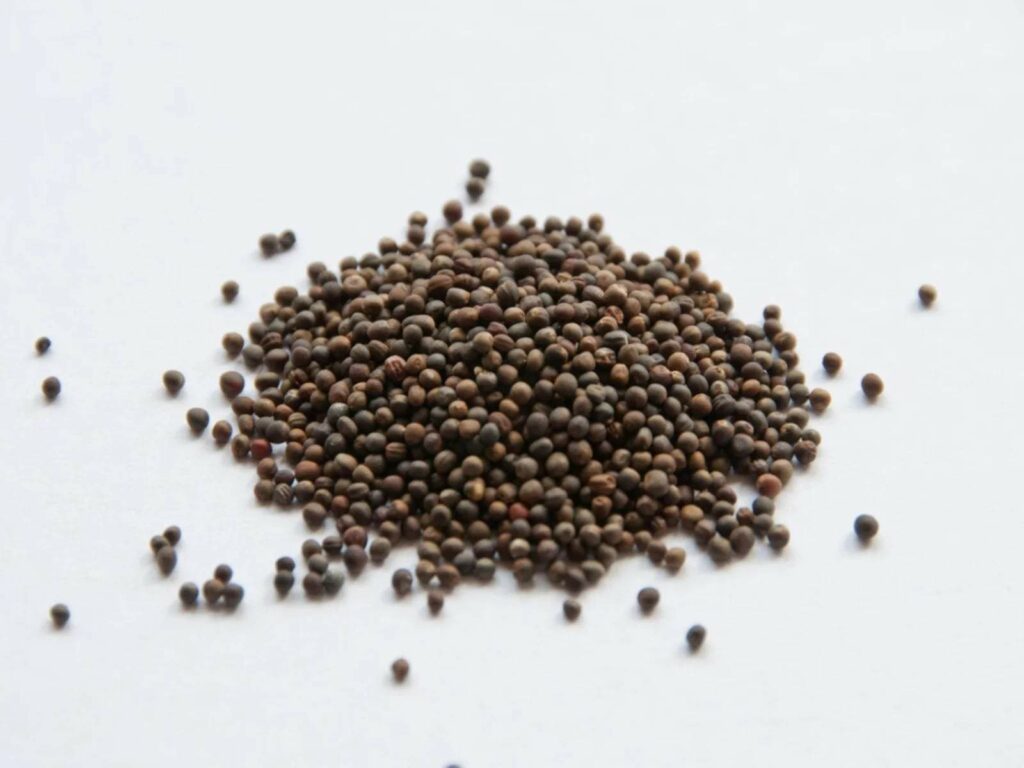
When growing broccoli from seeds indoors, they sprout rather quickly. In about 7 to 10 days you’ll begin to see it sprouting and developing its root system.
You can keep them indoors for a few weeks just until they’ve developed a root system strong enough to withstand environmental changes such as transplanting and moving outdoors.
It usually takes about 4 to 5 weeks before your broccoli plant should be ready to be transplanted outside to the garden.
You cannot keep your broccoli plant in its tiny container for too long or else it’ll become pot-bound. This along with environmental changes will cause quite a lot of stress on your plant.
As a result, your broccoli plant could “button”. This is when a broccoli plant develops a head too early in the season.
Unfortunately, prematurely grown heads won’t develop into a harvestable size. Ultimately, they’ll have to be tossed out or composted.
What To Do
It’s essential that for a good harvest, you need to plant your seedlings at the right time – starting them indoors and then moving them to the garden once they’ve developed a healthy root system.
If you’re purchasing your broccoli plant seedlings from a store, be sure to inspect their roots for any tangles and circling. Don’t purchase seedlings that are overly mature.
Planter’s Tip: When planting in spring, start your seeds about 6 to 8 weeks prior to your final frost date. Meanwhile, sow your seeds about 2 to 3 weeks prior to your final frost date or as soon as your garden soil is workable.
2. Excessive cold temperatures
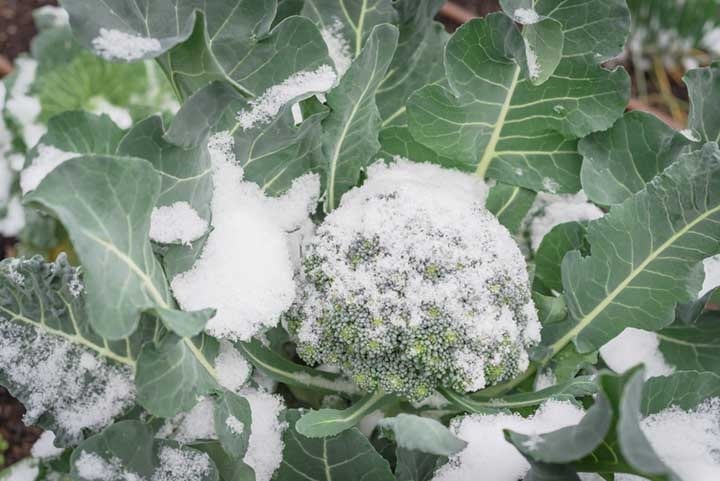
While broccoli is a cool weather crop, too much cold for extended periods can result in unwanted stress.
The ideal temperature for growing broccoli is anywhere between 60 to 70 F or 15 to 21 C. If the temperature drops below 55 F or 13 C for a while, this could force your broccoli plant into bolting.
Though it’s rather impressive that broccoli plants can withstand temperatures as low as 26 F or -3 C. Along with this, they can brave through strong winds and frost.
However, excessive cold temperatures for longer periods could then cause frost and ultimately damage your plant too much that it would die.
What To Do
To avoid your broccoli plant succumbing to the excessive cold temperatures, you’ll want to relocate it to an area that receives more warmth, heat, and sunlight.
However, if this isn’t possible, you can add mulch on top of your soil along with black plastic row covers to preserve the heat. For extra measure, you can also drape over old blankets and towels for some added warmth.
3. Excessive hot temperatures
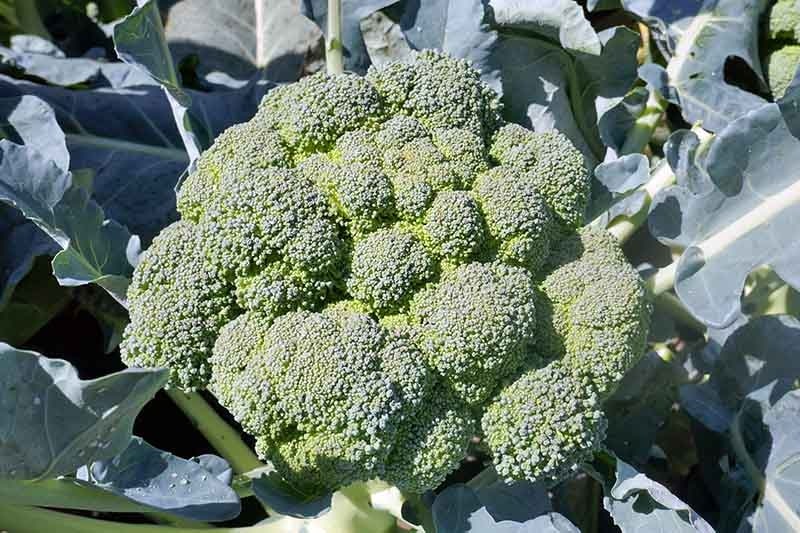
Since broccoli plants are cool weather crops, they’re more sensitive to rising temperatures.
Hence, the best temperature should be around 60 to 70 F or 15 to 21 C when it comes to growing broccoli.
Once temperatures exceed 86 F or 30 C, your broccoli plant will start bolting as a response to the stress and won’t last very long.
The broccoli will grow uneven, distorted, and lumpy heads. Apart from that, the intense heat could also injure the flower buds.
Despite being rather visually unappealing, the good news is that you can still use them when cooking.
What To Do
To prevent your broccoli drying out due to the excessive heat, you can give it a deep watering session first thing in the morning. This way, it has enough time to properly take in the water before it evaporates due to the afternoon heat.
Though, if your plant looks like it would require a second watering session, feel free to do so, especially in the summertime. However, ensure that you water them a couple of hours before nightfall.
Having wet soil throughout the night is a big no-no as it’s a conducive environment for fungal and bacterial growth.
Aside from that, it’s a great move to add mulch on top of your soil to preserve moisture and keep your soil cool. Mulch also prevents water from getting onto the foliage of your plants, which is a welcomed plus.
4. Day length increases
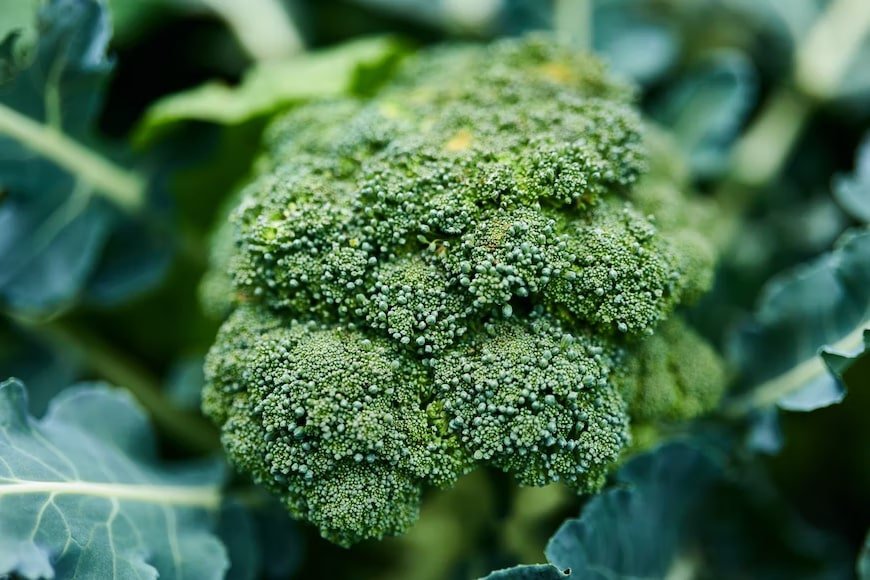
Did you know that broccoli plants can sense the change in day length? While it’s pretty cool that they can feel the season coming to an end, this could force your broccoli plant to bolt.
If your broccoli bolts, that’s an indicator that you’ve planted it too late in the season. Hence, your plant will sense the day length increase and forcibly hasten their cycle.
In other words, they won’t bother growing full broccoli heads. Instead, they’ll go straight to flowering and producing seeds.
What To Do
Luckily, this is preventable by not letting your broccoli plant sense the lengthened days. Simply reduce the amount of direct sunlight that your broccoli plant gets.
You can add other plants to give the broccoli some natural shade. Alternatively, you can also set up some nets or fabric to halt light at a specific time.
5. Transplant shock
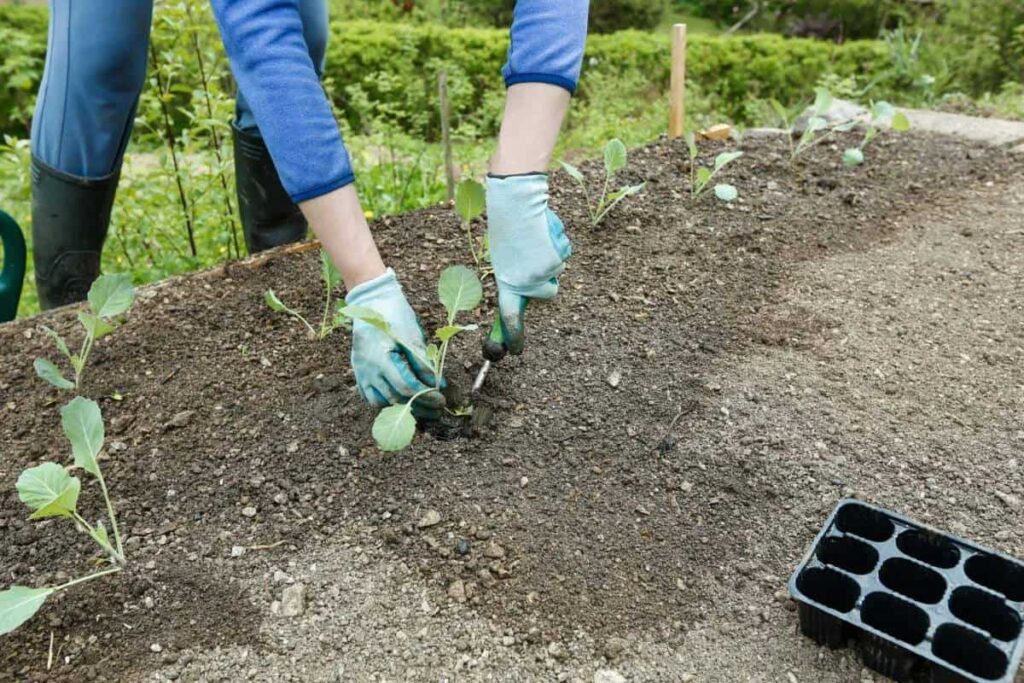
Another reason your broccoli plant is bolting could be due to root stress. Any seasoned gardener would know that transplant shock is relatively normal and sometimes completely unavoidable.
This can happen to any type of plant, whether it be a flower or crop. However, broccoli plants are more susceptible to getting transplant shock.
Transplant shock happens when your plant experiences stress after having its roots disturbed. This also happens when your plant hasn’t established a healthy root system to support itself yet.
Most of the time, plants that undergo transplant shock make a complete recovery and the issue typically resolves itself with the right growing conditions.
Nevertheless, there are certain cases wherein the transplant shock is too severe that the plant could die.
What To Do
To avoid transplant shock, avoid disturbing the roots when moving the plant to a new location. Unless the plant is rootbound and requires intervention, leave it as is when transferring.
This means you shouldn’t shake off the dirt, massage the roots, or anything similar. Instead, gently transplant your broccoli plant seedling into its new home with little to no interference.
Broccoli plant roots are quite shallow, so it’s important to avoid disturbing the plant as much as possible.
Aside from that, transplant early to avoid stressing out and damaging their well-established and mature roots. You can transplant your broccoli seedling when they get to about 2.5 inches or 7 cm big.
Planter’s Tip: Transplanting puts any plant under a lot of stress. To help with nutrient absorption and environmental adjustments, give your plant an extra boost with the help of trusty all-around fertilizers.
6. Lack of nutrients
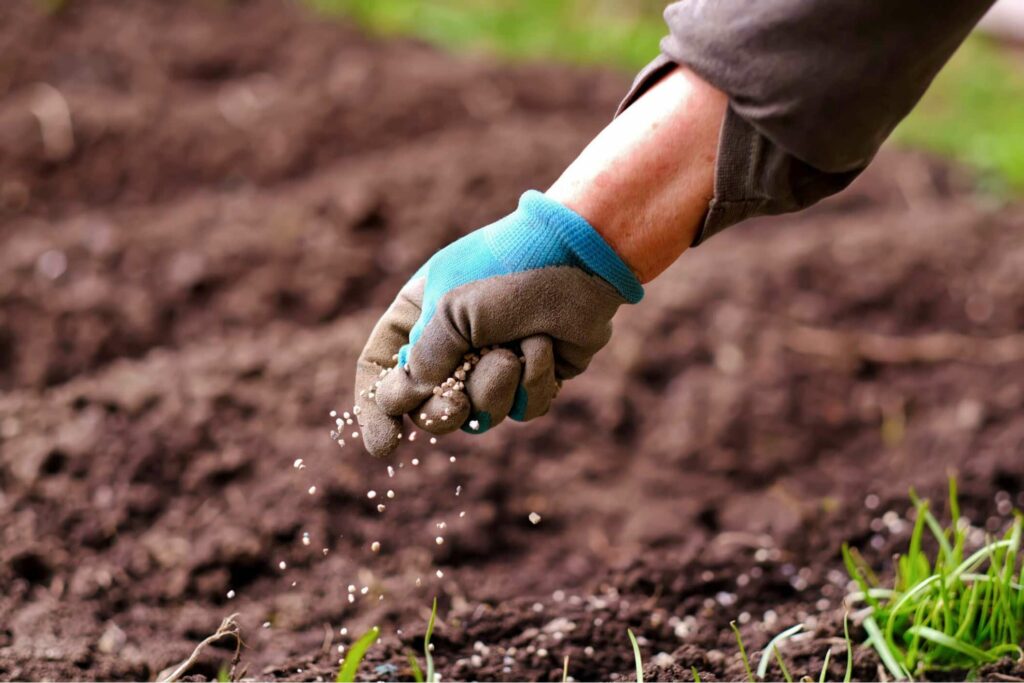
Another stressor for that may have caused your broccoli plant to begin flowering could be the lack of nutrients in the soil.
Most of the time, broccoli plants don’t need fertilizer. However, if you’ve planted them in soil that lacks fertility or falls short on nutrients, then you’ll have to fix that if you want to grow delicious heads.
For more accurate results, you could do a soil test to determine its specific deficiencies. Here are a couple of important nutrients you don’t want your broccoli plant missing out on:
| Nutrient Deficiency | Causes | Symptoms |
| Nitrogen Broccoli plants are heavy nitrogen feeders since nitrogen is essential in helping produce a ton of yields. | Excessive soil pH levels in the soilToo much organic matter in the soilOverwateringUnderwatering | Stunted growthBolting |
| Boron What makes boron essential in growing broccoli is that it helps decrease the repercussions of nutritional disorders. As a micronutrient, boron aids in proper cell and seed wall formation, protein synthesis, and tube growth, among others. | Too much nitrogen in the soilExcessive amounts of calcium in the soilSandy soilUnderwatering | Hollow stemsBrown discoloration on the stem’s tissues |
| Calcium Just like how calcium strengthens human bones, it also helps strengthen plants’ root developments. It also helps in decreasing food spoilage post-harvest by enhancing the quality of your broccoli plant’s storage. | Too much aluminum in the soilExcessive levels of nitrogen in the soilHeavy sodium content in the soilHigh concentration of potassium in the soilThe soil is too sandy | Poor yield qualityNecrotic lesions on the foliage |
| Phosphorous Phosphorus is essential in helping short-season crops like broccoli plants develop healthy roots early on along with increasing their vigor. | Too little organic matter in the soil Too much iron in the soilAcidic soilOverwatering | Red discoloration on foliage |
| Zinc Zinc is a helpful mineral because it aids in photosynthesis and internode elongation. It also boosts the content of your plant’s Vitamin C and sugar. | OverwateringUnderwateringToo much phosphorus in the soilExcessive cold temperatures | Stunted growth |
| Potassium One of the biggest benefits potassium brings is helping broccoli plants become more resistant to drought and cold temperatures. It also helps boost the head growth, which can increase yield. | Heavy clay soilToo much magnesium in the soilOverwateringToo little soil pH levels | Yellow or brown discoloration on older leaves |
What To Do
Since broccoli plants are heavy nitrogen feeders, you’ll want to bring in fertilizers, solutions, and organic materials that are rich in nitrogen.
These include:
- Crop boosters
- Nutrient-rich fertilizers
- Organic compost
While you’re at it, check the condition and quality of your soil. If it’s a bit too sandy, this means that water is being drained at a rate that your plant can’t properly absorb it yet before it’s gone.
To fix this, you may want to add compost into your soil to improve its water retention. To boot, you can also add mulch on top to keep your bed moist and cool.
If it’s the other way around and your soil is clay-like, this could mean that you have compacted soil. To address this, you can add a bit of sand to your soil or just let it dry out completely before watering again.
7. Damage from pests
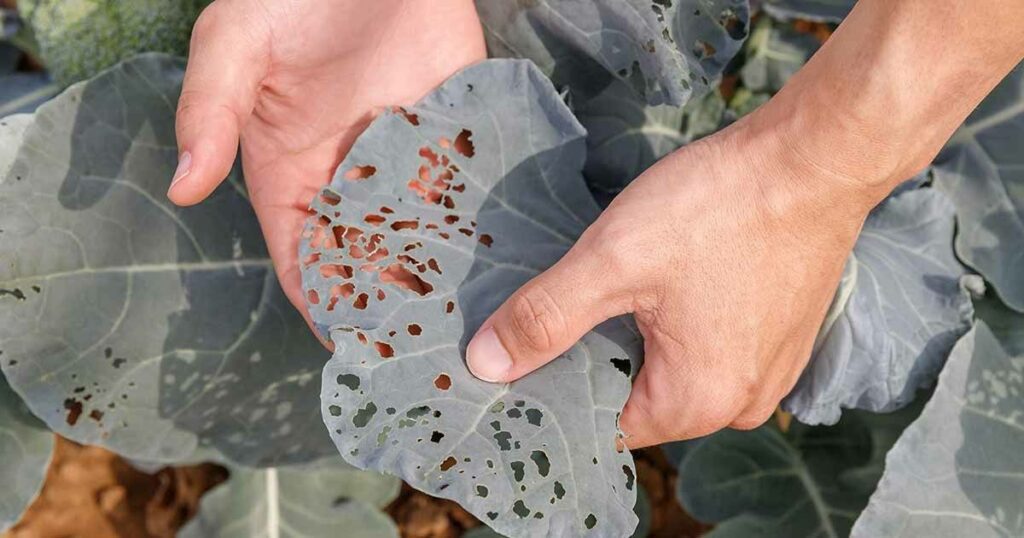
Like any other plant in the garden, broccoli plants are also vulnerable to the wrath of insects. Hence, damage caused by garden pests could also cause bolting due to the stress that the broccoli plant undergoes.
Luckily for you, we’ve created a comprehensive overview of the most common types of broccoli pests and how to deal with them.
| Pest | Symptoms | Treatment |
| Aphids At barely a centimeter long, aphids are tiny pear-shaped insects that are usually light green or white. They suck the vitality out of your plant’s stem and are quick to spread diseases. Aphids typically hide and feed underneath the leaves of your broccoli plant. | Discolored foliageWrinkled foliage | Option #1: Spray cold water on your broccoli leaves to scare off aphids. Option #2: Dust the underside of your broccoli leaves with flour in the morning to agitate the aphids, causing them to leave. Option #3: Spray insecticidal soaps. Option #4: Spray horticultural oils such as neem oil. |
| Slugs Slugs are soft-bodied mollusks that don’t have a shell. They usually come in various shades of brown and black. While they’re generally harmless and beneficial to the environment, they’re notorious for eating away at nearly any kind of leafy plant, especially in large numbers. | Slime trails left on the leavesHoles and chewed sides on the foliage | Did you know that slugs love beer? Unfortunately, this is also what is going to cause their demise. To make a beer trap, dig a hole deep enough to submerge a bowl or cup with the mouth-rim is roughly at ground-level. This ensures that the slugs can easily get in, but not out. Fill up the cup with beer and leave it out overnight. |
| Cabbage Root Maggots The cabbage root maggots are actually larvae that hatch from the base of the stem. They then travel down to feed on the roots. They’re small, white worms that closely resemble grains of white rice. The eggs, on the other hand, are brown and oval-shaped. What makes detecting cabbage root maggots difficult is the fact that they work underground, which means they aren’t easily spotted. | Wilting of foliageStunted growth | Option #1: Gently dig up your plant and soak the base in water. Carefully swish it around and remove all the maggots. Then, replant it elsewhere. Option #2: Introduce plants that bring in natural predators such as wasps and beetles. Option #3: Spread a generous helping of diatomaceous earth around the base of the plant. Do note that you’ll need to reapply after each rain. Afterwards, install row covers over the bed or collars around the base of your plant to prevent another infestation. |
| Cabbage/Broccoli Worm The cabbage/broccoli worms are actually the larvae of moths and butterflies. They’re fuzzy green worms that, despite their cute appearance, can eat away at the base of your broccoli like there’s no tomorrow. | Holes and chewed edges on the foliageStunted growth | Option #1: Submerge your broccoli plant in a container full of water mixed with ¼ cup of salt and 2 tbsp of vinegar. This’ll draw out the cabbage worms and you can simply dispose of them. Option #2: Spray pesticides that contain Bacillus thuringiensis or spinosad. Option #3: Handpick the cabbage/broccoli worms. Option #4: Use pesticides containing Bacillus thuringiensis (Bt). |
| Cutworms Cutworms are the larvae of a specific type of moth. They’re known to chew right through most of the foliage, especially at the base. Hence, it’s no surprise that there have been several instances of severed broccoli and cabbage. What makes them terrible in the garden is they usually wreck havoc on broccoli plants before they’ve even had the opportunity to properly mature. | Eaten and chewed up foliage and baseSmall tunnels in the soil | Option #1: Use pesticides that contain Bacillus thuringiensis (Bt) or carbaryl. Alternatively, you may opt for insecticides that have cyfluthrin or permethrin . Be sure to use this at night before they feed. Option #2: Sprinkle a generous amount of baking soda on the base and surrounding areas. Option #3: Hand pick each cutworm and toss them into a cup of soapy water. |
| Root-knot nematodes Root-knot nematodes are tiny, destructive, worm-like organisms that live in the soil and attack the roots of various plants. They have needle-like mouths that feed on the root cells, which cause lesions on the roots. This can make it difficult for your plant to absorb water and nutrients from the soil. It’s often rather difficult to tell if you’ve got root-knot nematodes in your garden because they work underground. | Discoloration on the foliageWilting Halted growth | One of the most effective ways to get rid of root-knot nematodes whilst saving your soil is by planting a ton of marigolds. On top of being pretty, these flowers release alpha terthienyl biphenyl compounds which are effective repellents. Thankfully, they make great companions for broccoli plants. |
| Flea beetles Flea beetles are small, soil-dwelling insects. They come in various shades of brown and grow no bigger than about ⅛ of an inch long. They are known to attack young broccoli plants just when they’re about to emerge. Apart from chewing holes and along the ends of foliage, they don’t cause too much damage. | Ragged holes on the foliage that look like your leaves have been shotChewed up ends of leaves | Option #1: Make a homemade spray repellent using 5 cups of water, 2 cups of isopropyl alcohol, and 1 tablespoon of liquid soap. Option #2: Generously sprinkle plain talcum powder onto the foliage. Option #3: Lay sticky traps around the perimeter of the plant to catch any jumping flea beetles. Option #4: Use pesticides that contain pyrethrins. |
8. Competition from weeds
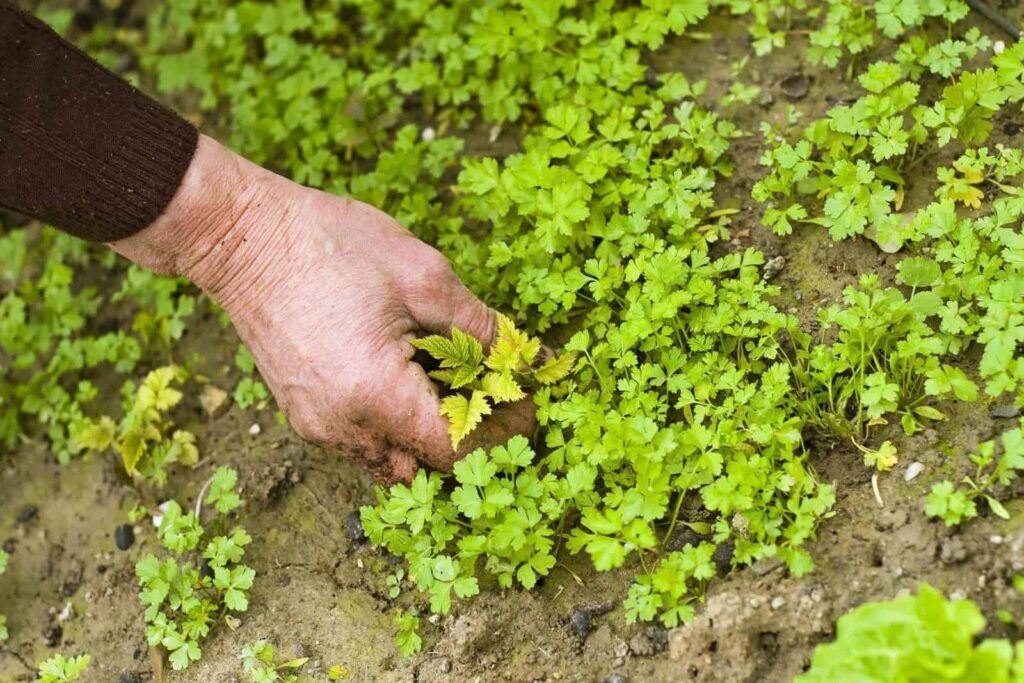
Just like any other garden plant, weeds are a menace when it comes to taking away a ton of vital nutrients, sunlight, and water.
Hence, competition from weeds can be a great stressor to your broccoli plant, forcing it to bolt early.
While broccoli plants can fare well in a fight against weeds, it’s best to minimize the presence of weeds, especially around seedlings.
What To Do
Luckily, the solution is fairly simple – remove all the weeds surrounding your broccoli plant. You can opt to either hand pick them or use a cobrahead tool for easier plucking.
Alternatively, you can opt for more low-maintenance weeding methods. These include adding organic mulch such as grass clippings and shredded newspaper or installing row covers on top of the soil.
9. Insufficient watering
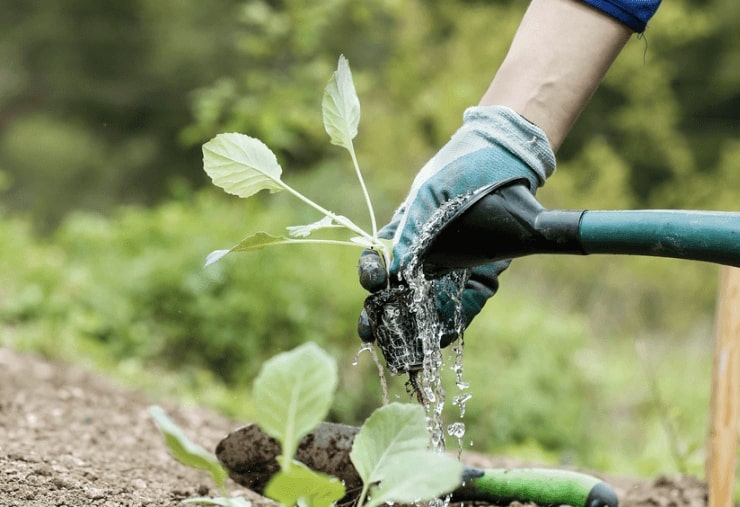
When growing broccoli plants, it’s important to know that they have shallow root systems. In fact, this goes for nearly all of the plants in the cabbage family.
Having said that, their soil has to be consistently moist from the time they’re sown up until harvesting. This ensures that they grow healthily through all stages of development.
Insufficient watering will result in water stress, resulting in your broccoli plant bolting early or being unable to grow to its ideal shape and size along with developing a bitter taste.
What To Do
For optimal growth, you’ll need to regularly and evenly irrigate your broccoli plant. When watering, dig a hole about 2 inches deep to feel whether the water has been absorbed properly into the soil.
Having said that, if your soil is quite sandy, you may need to water a little more deeply to ensure that the soil has soaked up an adequate amount of water.
It’s important to highlight that you need to ensure that the soil of your broccoli plant is dry in between watering sessions. This prevents constantly wet soil that can grow unwanted fungi and bacteria.
It’s a great practice to water your plants first thing in the morning to ensure that it has had enough time to take in all of the water before it has evaporated.
In the summertime, it’s often expected that you’ll need to water your plant more deeply, sometimes even twice a day. If needed, water your plant a couple of hours before nightfall.
Apart from that, it’s also a great investment to add compost into your soil. This will improve its structure, helping it retain water.
On top of that, a ton of beneficial bacteria, microorganisms, and critters will break down the compost and leave your soil with nutrient-rich gifts, if you will.
For extra measure, you can even add mulch along with row covers to help your plant’s bed retain its moisture, especially during the summer months.
Planter’s Tip: When watering your broccoli plant, avoid getting the head wet as this can encourage rot. Instead, water at the base of the plant.
10. Overcrowding

Another overlooked stressor that could result in bolting would be overcrowding your broccoli plants into a small space.
Despite having rather shallow roots, broccoli plants need adequate space apart to spread out and properly grow their shoots.
They also need enough space and soil so as not to fight over their water, sunlight, and nutrients, among others.
As mentioned earlier, all of this stress will cause your broccoli plant to flower early. This also makes them more susceptible to spreading diseases and pests around.
Without enough space to grow properly, you could also have stunted broccoli plants. As a result,
you will either have smaller than average heads or maybe even none at all.
What To Do
When growing your broccoli plants from seedlings, space them evenly about 12 to 24 inches apart. As for your rows, space them about 2 to 3 feet away from each other.
11. Poor soil
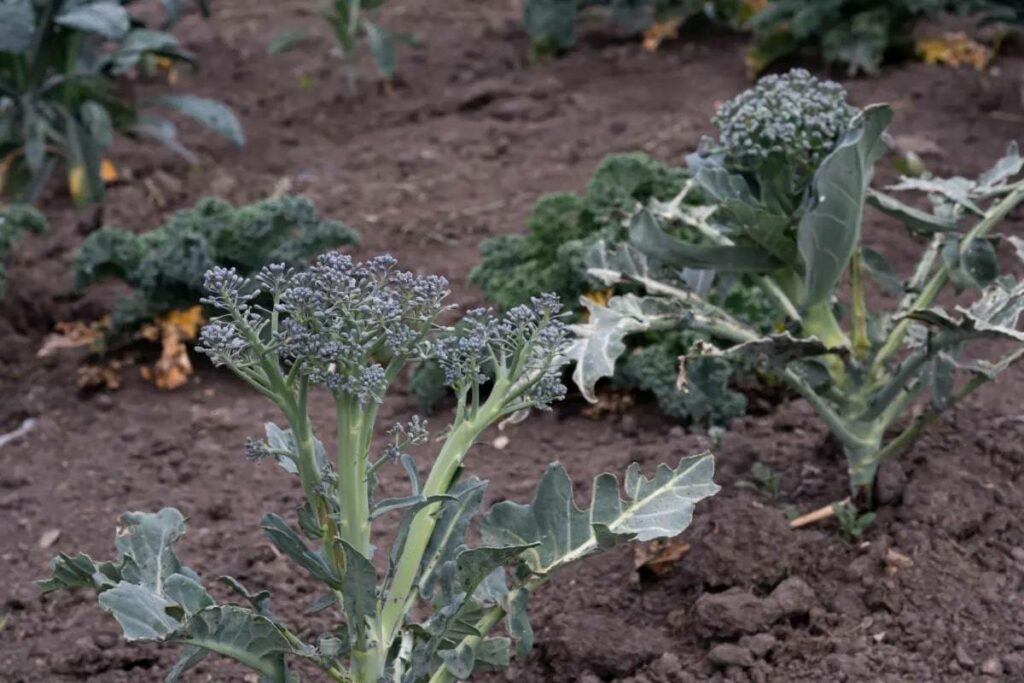
Poor or infertile soil is another possible reason that your broccoli plant is bolting. Bad soil conditions is a stressful environment for broccoli plants, potentially causing them to flower early.
Both acidic and alkaline soil reduces the ability of your plant to properly absorb water and nutrients. This will prevent speedy plant growth from occurring.
In fact, it’s important to get your soil tested every 2 to 3 years to ensure that it has the right pH balance. The ideal pH range for optimal broccoli growth is anywhere between 6.0 to 6.8.
You can get a soil pH testing kit online or at your local gardening store. Alternatively, you can visit your local extension office or agriculture council.
After you’ve gotten the results of your soil’s pH test, the numbers will indicate the best course of action to remedy the imbalance.
If your results show numbers below 6.0, that means your soil is acidic. If you add too much coffee grounds to your soil, that could be the culprit.
On the other hand, readings higher than 7.3 mean that your soil is alkaline. Too much calcium, magnesium, and sodium in the soil makes it harder for your broccoli plant to take in nutrients and water.
Luckily, broccoli is known to do well in all kinds of soil. Just ensure that it’s watered well and has adequate drainage.
What To Do
To lessen the acidic contents of your soil, the most popular remedy is to add agricultural limestone. While the total amount of limestone will vary depending on how much your soil actually needs, keep in mind results are more effective the finer the limestone.
Alternatively, you can also incorporate well rotted manure or compost into your soil. You can add about an inch’s worth and thoroughly distribute before planting.
To decrease alkaline levels in your soil, you can neutralize it by adding aluminum sulfate, sulfur, or sulfuric acid.
How do I prevent my broccoli from flowering?
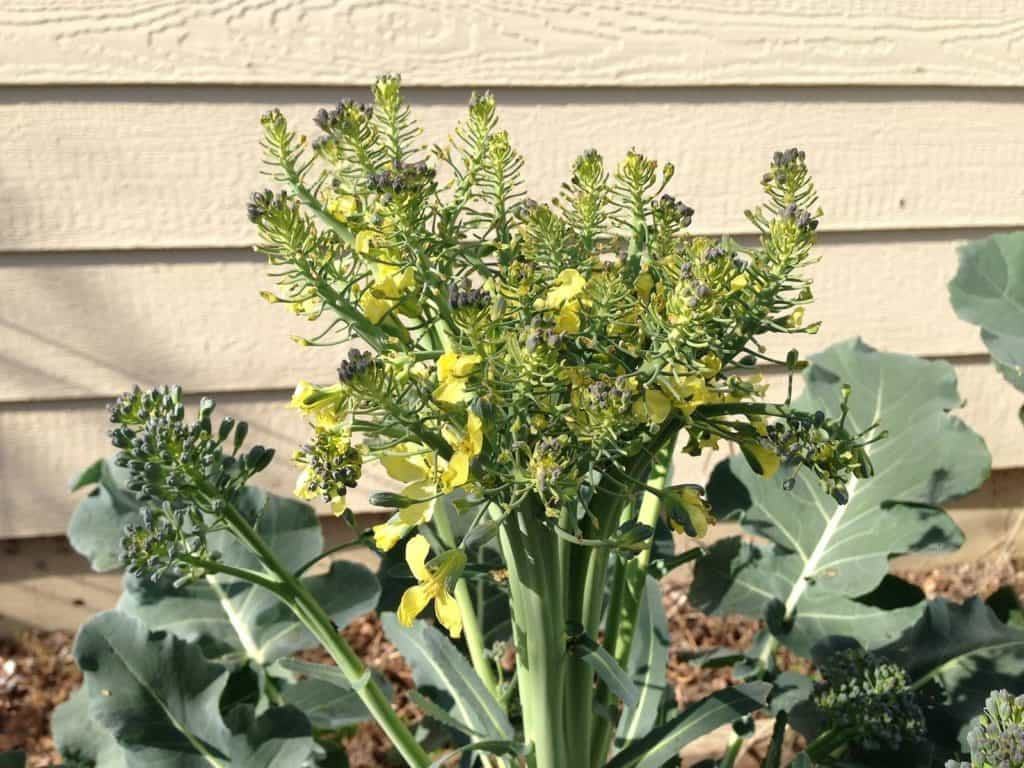
While bolting is completely natural, there are a couple of ways that you can prevent your broccoli plant from flowering.
1. Opt for heat-tolerant broccoli varieties
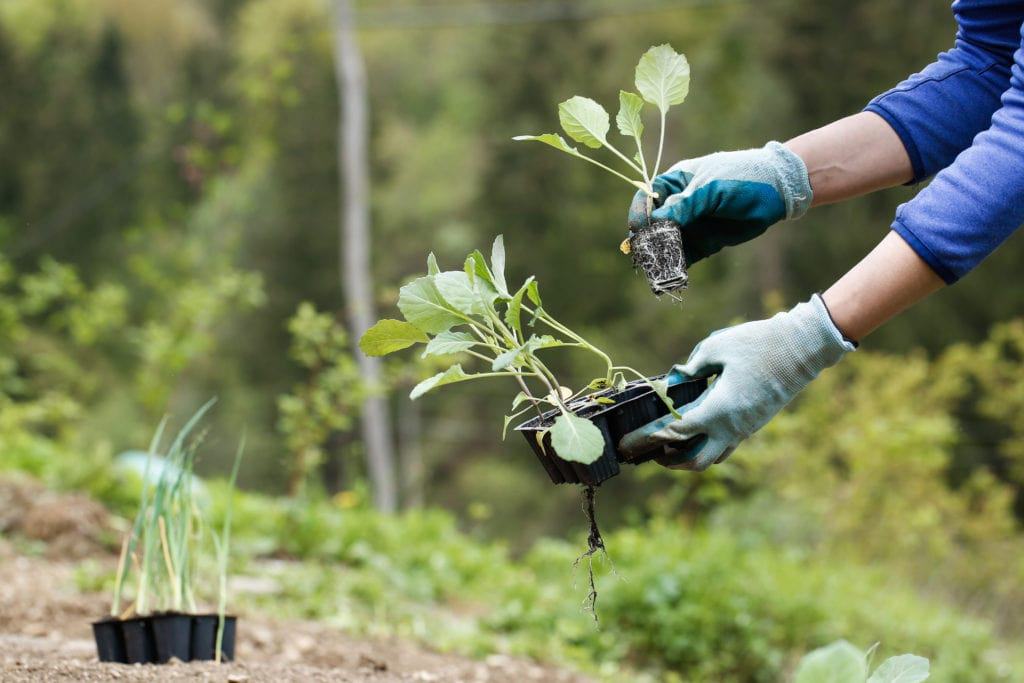
One of the most common causes of bolting is stress from excessive hot temperatures. This is because broccoli plants are cold weather crops.
Hence, a way you can prevent premature bolting is by growing more heat and bolt-resistant broccoli plant varieties.
This way, you can easily grow broccoli plants during the summertime, especially if you live in a tropical country.
These include heat-tolerant varieties such as:
- Belstar
- Destiny
- Sun King
- Flash
- Green Magic
2. Opt for fast maturing broccoli varieties
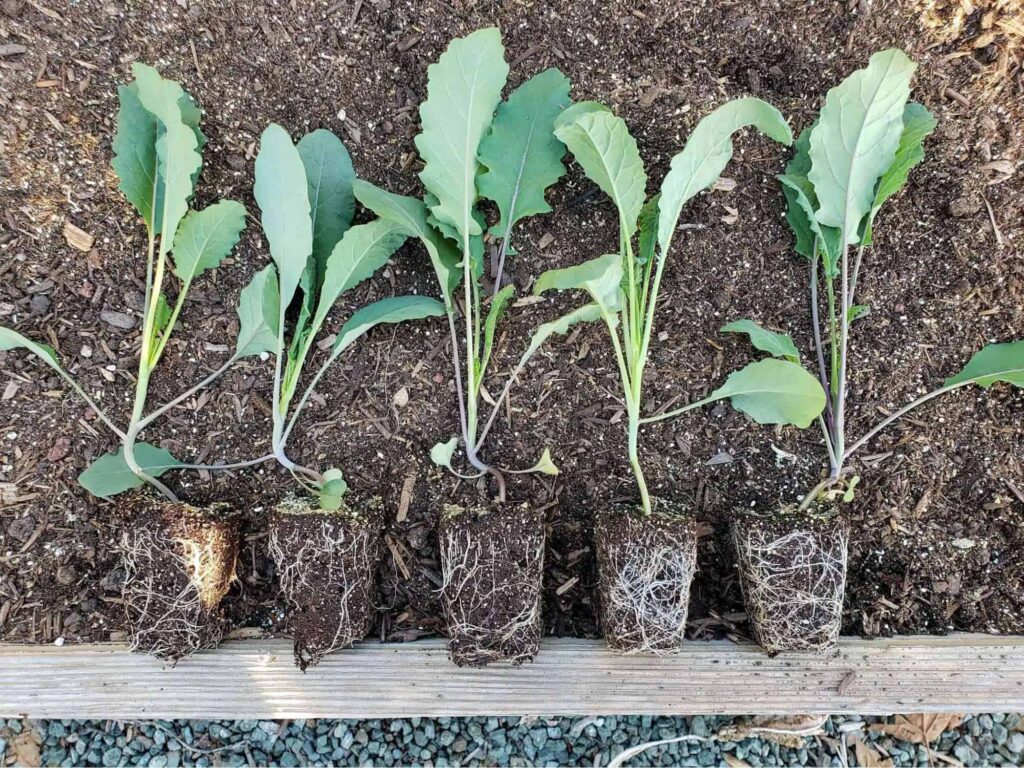
Another way to prevent your broccoli from bolting early on is to opt for varieties that mature quicker. This way, it’ll only take a couple of months until they’re ready to be harvested.
You can grow fast maturing broccoli varieties such as:
- Spigariello Liscia
- Atlantis
- Spring Raab
- Monflor
3. Ensure stable temperatures
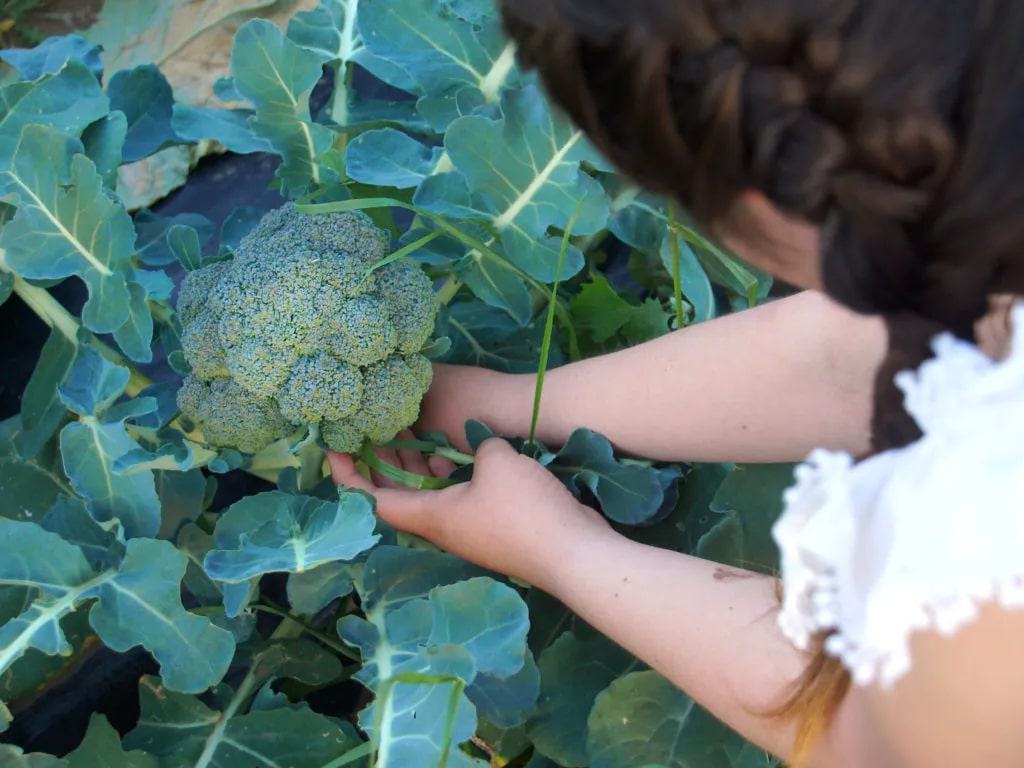
The most common culprit for early bolting is stress from high soil temperatures. Hence, it’s vital that you keep your plant’s soil temperatures stable.
First off, you can put about 3 to 6 inches’ worth of mulch on top of the soil to preserve moisture and prevent heat from warming up the soil.
What’s great about mulch is they prevent water from splashing onto the foliage, which intercepts any chances of rot. They also prevent pesky weeds from growing that’ll take away nutrients from the soil.
To boot, adding mulch is also relatively cheap to do since you can use organic and recycled materials. The best types of material to use are:
- Straw
- Grass clippings
- Shredded fallen or dry leaves
- Newspaper or cardboard
Planter’s Tips: Before adding mulch onto your top soil, cut up large pieces so that it’ll be easier to break down into the soil.
Secondly, water your broccoli plants deeply with around 1 to 1 ½ inches of water each week. When doing so, ensure that you water the base of your plant gently to avoid water splashing around and to ensure proper absorption.
If you’re not sure whether you’ve watered enough, stick your finger through the soil at about 2 inches deep. If the soil still feels dry and sandy then you haven’t watered enough.
To boot, keep your broccoli plants well-shaded to prevent heat from drying out the soil too soon. This will also prevent stress from the high temperatures and prevent the plant from bolting early.
You can opt to move them to a shady area or simply use garden umbrellas to block out the sunlight.
4. Harvest early and frequently
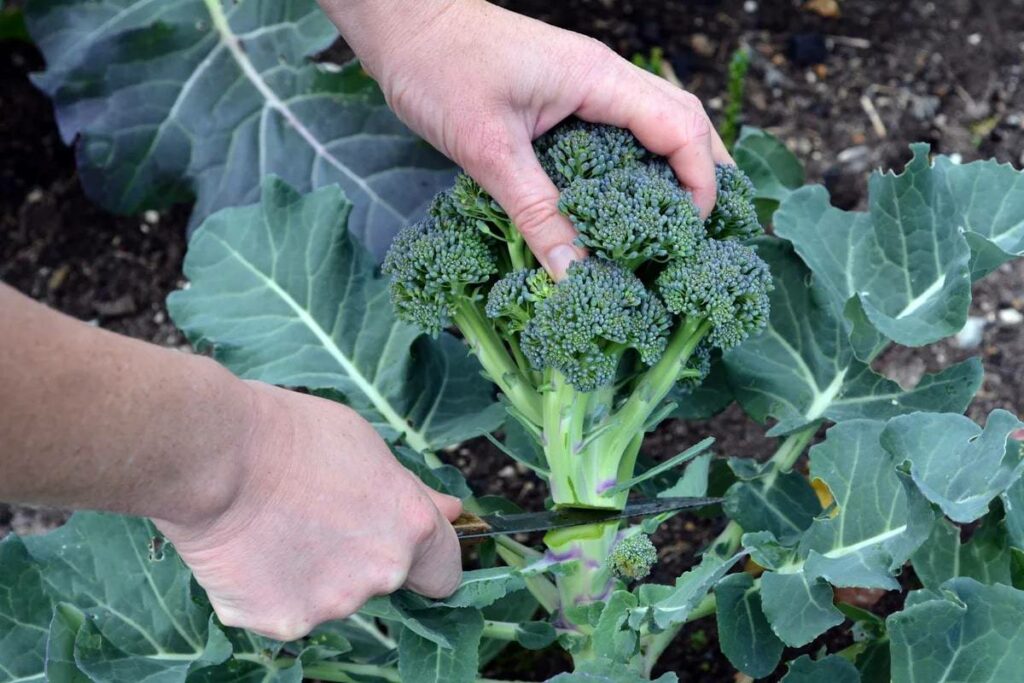
Since broccoli is a cut and come type of vegetable, you need to harvest early and frequently to ensure that you’ve collected the head when its taste, quality, and nutrition levels are at its highest.
To know when your broccoli plant is ready to harvest, watch out for the following signs:
- The head of the broccoli is about 4 to 7 inches wide and feels firm and tight. It’s important to note that the florets shouldn’t be separating yet.
- The florets are at a decent size. They should be at a similar size to a matchstick.
- The florets should be a deep green color. Even the slightest tinge of yellow is already an indication that your broccoli plant will bolt soon so you have to harvest the head immediately.
Most varieties of broccoli plants require around 60 to 70 days before they fully mature and are ready for harvesting.
If you’re in doubt, always double-check the maturity information on your seed packet. Alternatively, you can contact your seed supplier, too.
5. Plant broccoli at an ideal site
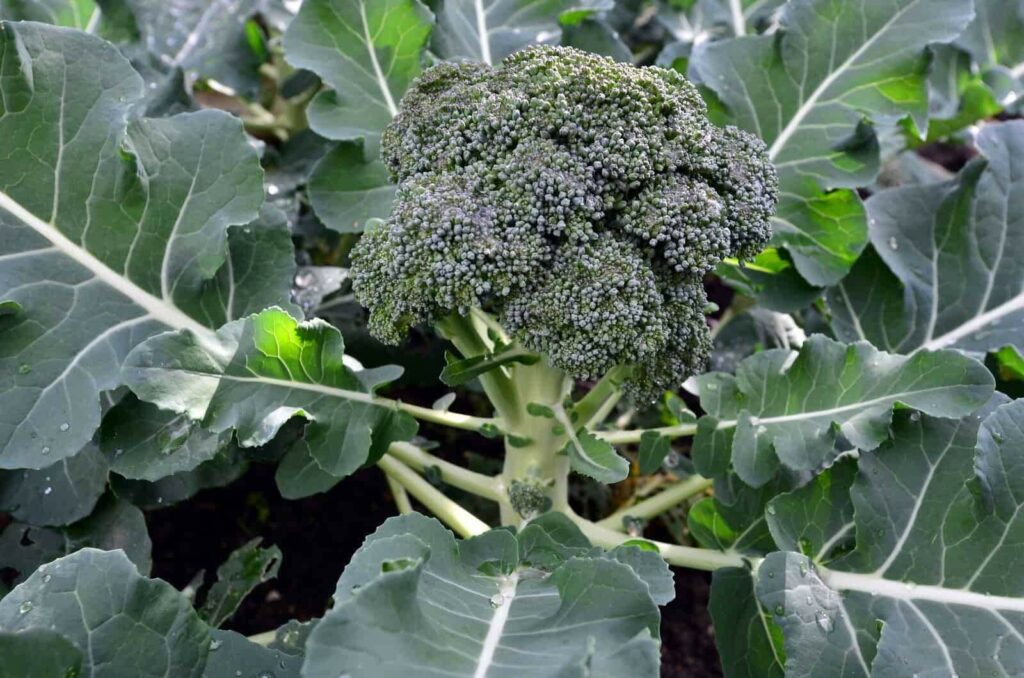
What’s great about growing broccoli is that they aren’t overly fussy about where you grow them. Having said that, they’ll do just fine in pots, planters, in-ground, or raised beds.
However, you’ll need to make sure that their container is at least 16 inches in diameter and 12 inches deep. It’s important to give your plant enough room to grow sizable heads and develop strong roots without any stress.
Apart from that, they need to be located in an area that receives around 8 hours of full sun daily. Though, pay close attention to the weather as temperatures higher than 86 F or 30 C could severely negatively impact your plant’s growth.
On top of adequate sunlight, your broccoli plant also needs sufficient drainage. This way, the soil isn’t constantly wet as this could promote bacterial and fungal growth, making your plant more susceptible to diseases.
Will my broccoli regrow after flowering?
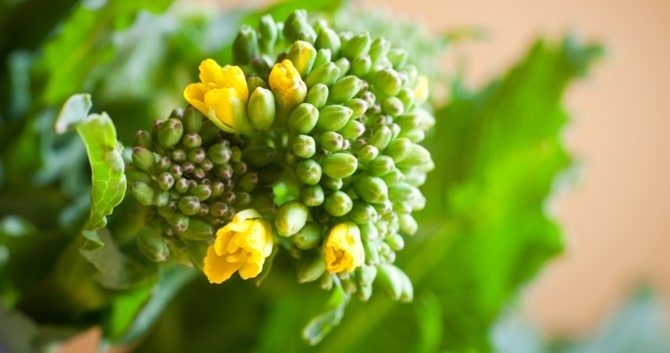
You can harvest broccoli heads from your plant about 2 to 3 times within the span of a couple of months or throughout its lifecycle.
After you’ve harvested the last central head of your broccoli plant, a head will no longer regrow from there. Instead, secondary crops will grow from the side shoots of the plant.
All you need to do is leave them in the ground and let them do their thing. But don’t forget to water regularly.
However, if your broccoli plants typically don’t regrow well after an early bolt. Hence, it may be better to simply pluck the entire plant out and replant another one.
What do I do with broccoli that has flowers?
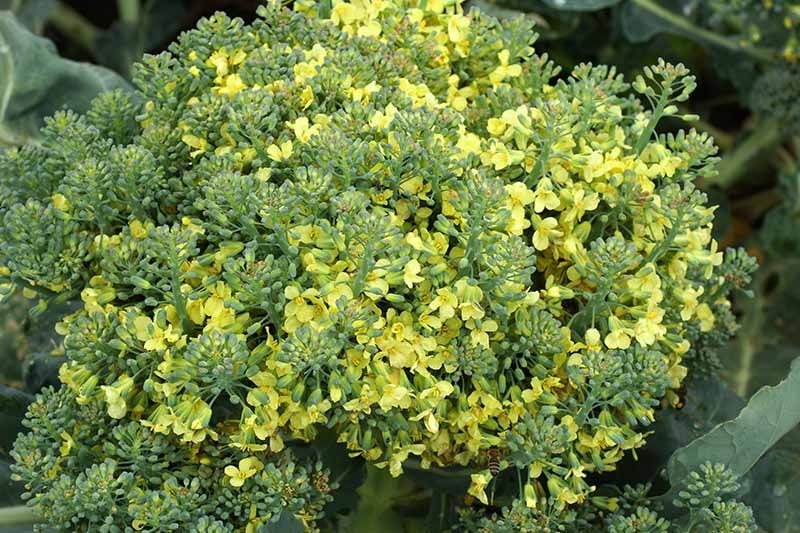
If your broccoli plant is already well-bolted, you can leave it alone to continue its course. This way, you can gather seeds for the following season.
This is also great news for pollinators and beneficial insects that love blooming yellow flowers. Speaking of, these yellow flowers are edible, too, so you can toss them into your salad.
Otherwise, you can opt to harvest the head. Side shoots will begin to grow after a while which will eventually become secondary crops.
Though, this will depend on the specific variety of broccoli that you’ve planted. Nevertheless, most varieties grow side shoots.
Can you eat broccoli that has flowers?
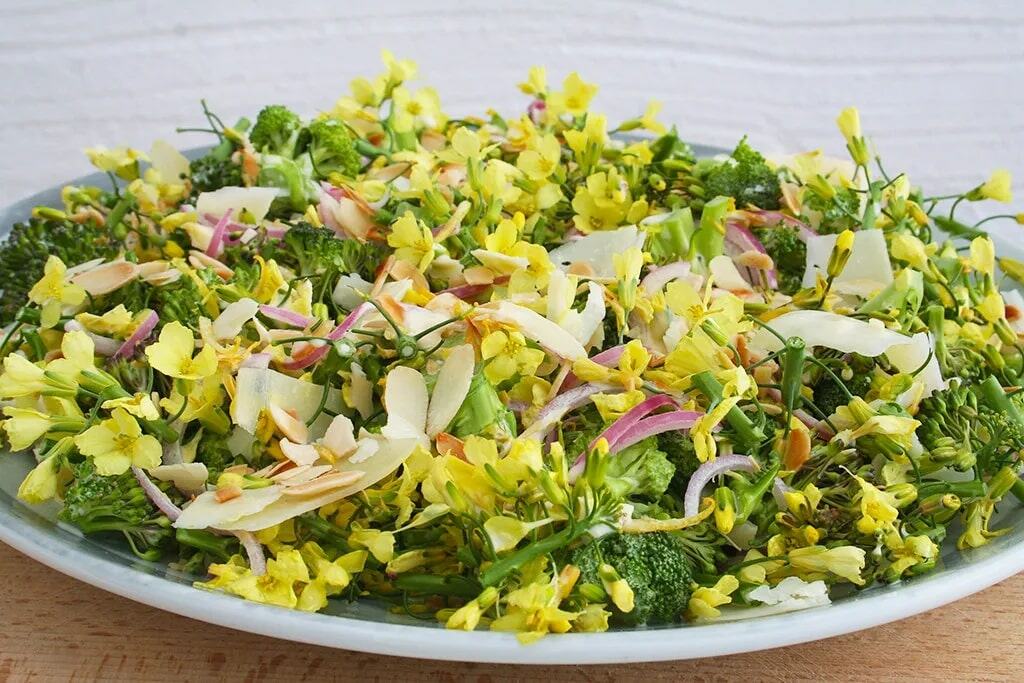
You can eat a broccoli head that has just begun bolting and has already bolted. Though, it’s important to note that it’ll be quite chewy and bitter.
Keep in mind that the stem and leaves are also edible. Hence, you won’t have to worry about any part going to waste.
Having said that, you can make a simple broccoli salad, blended into a smoothie, or even stir fry it. To be honest, there are a ton of possibilities with what you can do so don’t hesitate to be creative.
FAQs About Broccoli Flowering
Broccoli plants begin to flower after it has reached maturity, which takes about 50 to 70 days depending on the variety.
Alternatively, broccoli plants begin to bolt once subjected to poor environments for a prolonged period of time, resulting in stress.
A broccoli plant normally grows just one central head. After harvesting, side shoots will grow secondary crops.
The best time to harvest broccoli heads is when they’re about 4 to 7 inches wide, a deep green color, and feel tight and firm. The florets should be tight and about the size of a matchstick.
You can still save a broccoli plant that has bolted early by harvesting the head. Side shoots typically grow after a couple of weeks.
Aside from that, if you’ve caught it early you can try your luck with simply pruning off the flower buds. However, there’s no guarantee that your broccoli plant will stop bolting.
However, broccoli plants that have bolted early usually don’t regrow well. Hence, you may be better off removing the plant entirely and replanting a new one.




